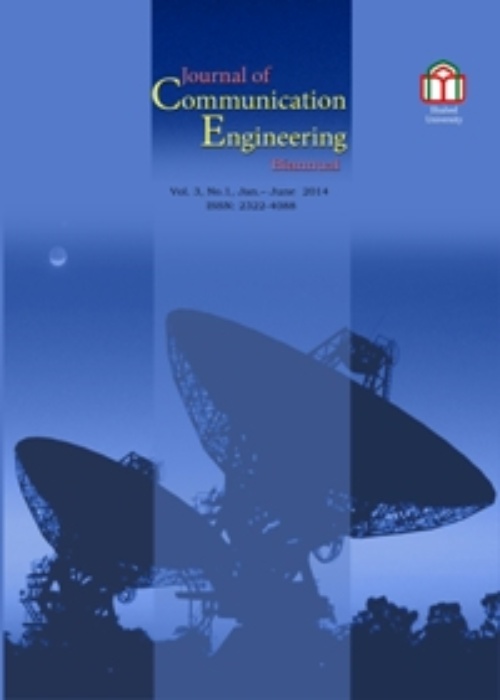فهرست مطالب
Journal of Communication Engineering
Volume:2 Issue: 4, Autumn 2013
- تاریخ انتشار: 1392/12/19
- تعداد عناوین: 5
-
-
Page 1LEACH is the most popular clastering algorithm in Wireless Sensor Networks (WSNs). However, it has two main drawbacks, including random selection of cluster heads, and direct communication of cluster heads with the sink. This paper aims to introduce a new centralized cluster-based routing protocol named LEACH-AEC (LEACH with Adaptive Energy Consumption), which guarantees to generate balanced clusters over the network. In LEACH-AEC, more information from the current state of nodes (including the residual energy of nodes, the distance from sink, and the distances between cluster heads) are considered to select the optimal cluster heads. Also, the multi-hop routing extension via A-Star algorithm is utilized in LEACH-AEC to cope with routing in large topological WSN areas. In contrast to the previous cluster-based protocols, the main advantage of LEACH-AEC is to prolong the network lifetime, based on the application specifications. Simulation results show that the proposed routing protocol plays an effective role in reducing energy consumption, provides a balanced consumption of energy and increases the lifetime of the network.Keywords: Clustering, Data Transmission, Energy Consumption, Routing Protocol, Wireless Sensor Networks
-
Page 2
A proper antenna to couple to a microstrip Microwave Kinetic Inductance Detector (MKID) is designed and simulated. A twin-slot microstrip-fed inline antenna is designed for frequency band of 600-720~GHz integrated with an elliptical lens and coupled to the MKID. A systematic design procedure for design of such antenna with microstrip inline feeding is presented. Whole structure of lens and twin slot is simulated by full-wave electromagnetic numerical software. A locally changing technique is also used to have good matching between antenna and feed line. Results show good radiation pattern with directivity near 30dB and side lobe levels better than -10.5 dB in both H-plane and E-plan and also antenna efficiency is better than 93% and total coupling efficiency is better than 84% in whole frequency band. This antenna is recently used in a superconducting on-chip sub-millimeter wave filterbank spectrometer.
Keywords: Microstrip, fed antenna, Microwave kinetic inductance detector, Sub, mm wave detector, Superconducting inline antenna, Twin slot antenna -
Page 3In accordance with the Costa theorem, every interference which is independent of the channel input and known non-causally at the transmitter, does not affect the capacity of the Gaussian channel. In some applications such as cognitive channels, the interference depends on the input and hence has some information. In this paper, we study the channel with input dependent interference and prove a capacity theorem that not only subsumes the Costa theorem but also explains interestingly interpretable impact of correlation between side information and channel input on the capacity.Keywords: Gaussian channel capacity, correlated side information, two sided state information
-
Page 4This paper concerns sub-channel allocation in multi-user wireless networks with a view to increasing the network throughput. It is assumed there are some sub-channels to be equally divided among active links, such that the total sum rate increases, where it is assumed each link is subject to a maximum transmit power constraint. This problem is found to be a non- convex optimization problem and is hard to deal with for large number of sub channels and/or users. However, relying on some approximation methods, it is demonstrated that the proposed sub-optimal problem has roots in combinatorial optimization, termed as Assignment problem which can be tackled through the so called Hungarian method. Simulation results demonstrate that the proposed method outperforms existing works addressed in the literature.Keywords: Resource Allocation, Multi, carrier Wireless Networks, Rate Adaptive
-
Page 5Distributed storage systems are mainly justified due to their ability to store data reliably over some unreliable nodes such that the system can have a long term durability. Recently, regenerating codes are proposed to make a balance between the repair bandwidth and the storage capacity per node. This is achieved through using the notion of network coding approach. In this paper, a new variation of these codes, called hybrid regenerating codes incorporating a super node is proposed, showing in some cases the new code outperforms existing regenerating codes in terms of the repair bandwidth and/or download cost.Keywords: Network Coding, Super Node, Hybrid Regenerating Codes


